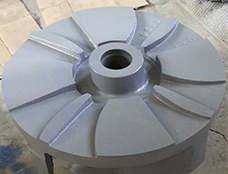+86 311 85258258
+86 311 85258258
Aug. 28, 2020
OEM metal parts manufacturer introduces the characteristics of high chromium cast iron casting production.
(1) High Chrome cast iron has poor casting performance, low thermal conductivity, poor plasticity, large shrinkage, and has a large tendency to hot and cold cracks. In the casting process, cast steel and Considering the characteristics of cast iron in combination, full attention must be paid to the feeding problem of castings. The principle is the same as that of steel castings (using risers and chilled iron, and follow the principle of sequential solidification). Due to the high content of chromium in the alloy, it is easy to form a film on the surface of the molten iron, so the liquid iron seems to have poor fluidity, but in fact, the fluidity is better.
(3) The shrinkage of high chromium cast iron is similar to that of cast steel, and its linear shrinkage rate can be calculated as 1.8% to 2% on the pattern production. In the production of sand molds, the size of the riser can be calculated according to the regulations of carbon steel, and the gating system is calculated according to the gray cast iron, but the cross-sectional area needs to be increased by 20% to 30%. The choice of pouring riser should pay attention to two aspects: one is to ensure the quality of the casting working belt (use part); the other is to maximize the yield of the casting.

High Chrome Cast Iron
(4) Because the riser of high chromium castings is not easy to cut off, it is advisable to use side riser or easy-to-cut riser in the form of the riser.
(5) In the design of the casting process of specific parts, care must be taken not to prevent the casting from shrinking, so as to avoid cracking. In addition, if the unpacking temperature is too high after pouring, it is easy to cause the casting to crack. Slow cooling below 540 ℃ is very necessary. The casting should be fully cooled in the mold before opening the box to clean the sand, or do not open the box first. Clear the sand and pile them together (castings, pouring systems, etc.) to cool the dry sand slowly. The environment around the unpacking must be kept dry, free from moisture and water, otherwise, it is easy to cause cracks in the casting.
(6) The pouring temperature should be low, which is conducive to the refinement of the dendritic and eutectic structure and can avoid defects such as excessive shrinkage and sand sticking on the surface caused by excessive temperature. The pouring temperature is generally about 55 ℃ higher than its liquidus line (1290 ~1350 ℃), light and small parts are generally controlled at 1380 ~1420 ℃, and heavy and heavy parts with a wall thickness of more than 100mm are controlled at 1350 ~1400 ℃.